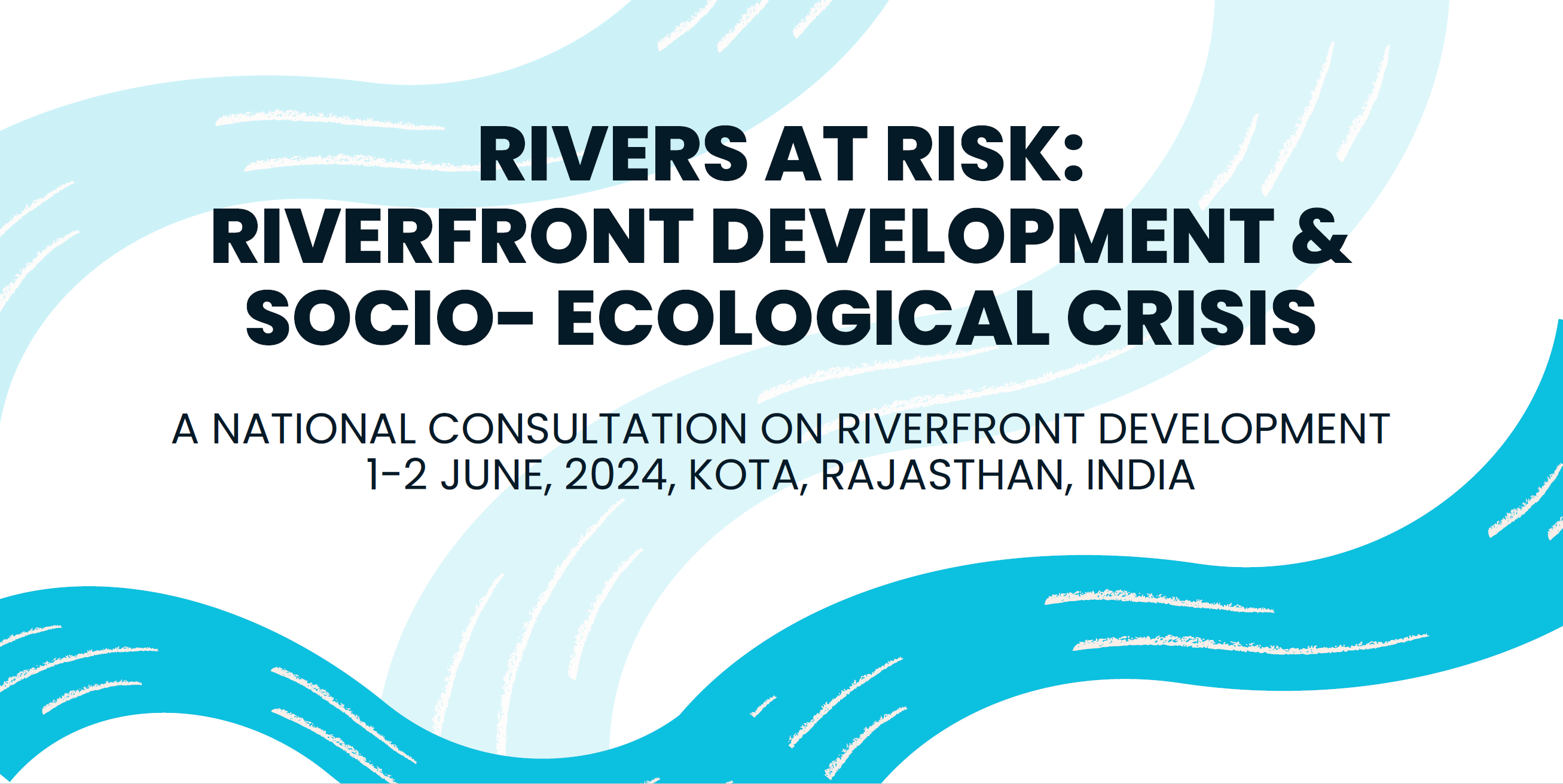A 2-day National Conference on Riverfront Development and its Socio-Economic implication across different rivers in India was organised by PRC in Kota, Rajasthan in collaboration with other stakeholders and activists around the country.
The Kota Riverfront, developed at a staggering cost of ₹1200 crores by the Rajasthan Government to boost the local economy through tourism, is currently operating at a significant deficit. The anticipated tourist influx has failed to generate the necessary revenue to cover the development costs. The project has also led to mass displacement and disrupted the fluvial flow of the Chambal River. In light of these issues, a national consultation on riverfronts was held in Kota earlier this week, where social activists, scientists, and lawyers gathered to discuss the challenges associated with riverfront developments in India and formulated a declaration to protect rivers from heavy concretization.
Participants emphasized that riverfronts have been integral to India since ancient times, fostering a symbiotic relationship between the river and local communities. Manu Bhatnagar, Director of the Indian National Trust for Art and Cultural Heritage, illustrated through his presentation on the historical development of the Patna Riverfront that riverfronts evolved organically. They provided access for religious rituals, commercial activities, and historical landmarks such as the Benares ghats. In contrast, contemporary riverfronts are designed to create urban spaces and enhance real estate values.
Riverfronts have become lucrative projects, attracting significant financial investment. Dr. Narsimha Reddy from Hyderabad highlighted that nearly 100 rivers in India are undergoing riverfront development at an estimated cost of ₹10 lakh crores, with the Musi River in Hyderabad alone costing ₹1 lakh crore. Soumyadutta, a social activist from Delhi, pointed out that riverfronts globally are driven by substantial financial motives rather than enhancing urban life for the middle class, stating, “Paise ko ghuma ke paise banane ka hor hai” (there is a push to generate money through financial investments).
In a session focused on Pune, Lucknow, and Jammu, Sarang Yadwedkar, a member of Pune’s Planning Committee, critiqued the approach to riverfront development, comparing it to taking rivers to a beauty parlor instead of a hospital. Venkatesh Dutta discussed how the Gomti Riverfront Development in Lucknow destroyed riparian wetlands and reduced the base flow of the Gomti River. Anmol Ohri of the Climate Front Foundation linked Jammu Tawi Riverfront’s development with similar projects on the Sabarmati and Gomti rivers. Gautam Bandhopadyay and Shakeel ur Rasool discussed how rivers in Srinagar and Raipur are being commercialized for resource extraction. Avli Verma from Manthan Adhyay Kendra highlighted the environmental and social risks of riverfront development along the Brahmaputra River, noting that necessary clearances are often bypassed, endangering the livelihoods of small boat owners and fisherfolk.
A significant session on Gujarat’s riverfront development began with the screening of the documentary “How Ahmedabad Lost Sabarmati.” Speakers Rohit Prajapati, Krishnakant, and Neha Sarwate criticized the adoption of Western development models, which disregard local ecological characteristics. They stressed the need for a multidisciplinary approach and continuous dialogue with stakeholders, concluding that citizen participation is crucial for capacity building.
Ravi Jain and Ashok Jain, local citizens of Kota, provided insights into the Chambal Riverfront development, highlighting issues such as discrepancies in safety wall construction, river flow obstruction, and the cantilever bridge construction. The Joint Committee report directed by the NGT emphasized the need to reassess infrastructure measures and prioritize comprehensive flood risk mitigation strategies.
The conference also addressed the socio-ecological impacts of riverfront development, such as livelihood loss and mass displacement. The documentary “Vilupt Hote Gotakhor Samaj – Disappearing Diving Community” underscored the human rights perspective. Coordinators Sheikh Akbar Ali and Abdul Shakeel from the Basti Suraksha Manch campaign highlighted that infrastructure development obstructs river access, affecting marginalized communities like the Gotakhors and fisherfolk.
The conference concluded with a call for national-level action to address the adverse impacts of riverfront development. A declaration was formulated, stating that riverfront projects often lead to land grabbing, displacement, concretization, channelization, gentrification, discrimination, and corruption. The declaration advocated for the restoration of rivers, prevention of pollution, and promotion of environmental justice, equity, and ecological integrity. It also emphasized public scrutiny of riverfront projects and the implementation of stringent standards and environmental clearance mechanisms.
Soumya Dutta concluded the conference by asserting the importance of recognizing river rights in accordance with the United Nations Convention. He called for collaboration in resisting infrastructure development across India’s rivers to build a broader resistance movement.
The event coordination has been done by PRC team along with our Co-organiser from Kota.

